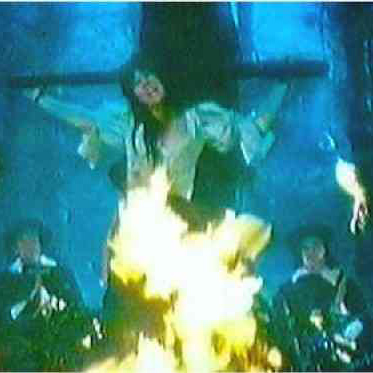 Who better than to define Cunning Folk than Dr. Owen Davies, a researcher of witchcraft and the role of the Cunning Folk in the British Isles:
Who better than to define Cunning Folk than Dr. Owen Davies, a researcher of witchcraft and the role of the Cunning Folk in the British Isles:
“Cunning-folk, who were also known as wise-women, wise-men, conjurors and wizards, were an integral part of English Society right up until the Early Twentieth Century. Over the centuries hundreds of thousands of people must have consulted them regarding a wide range of problems, but particularly those concerning affairs of the heart, theft, sickness and most important of all witchcraft. They were multi-skilled, or at least professed to be so. They practised herbalism, treasure-seeking and love magic. They revealed the identity of thieves and divined the whereabouts of lost and stolen property. The more learned cunning-folk also practised astrology, while the less learned pretended to be masters of the art. The most lucrative aspect of their business was the curing of those people and animals who were thought to be bewitched, and also the trade in charms to ward off witches and evil spirits.“ (Source)
A cunning person is essentially a traditional folk-magic practitioner from the United Kingdom. It is believed those who were literate drew upon the magical grimoires and chapbooks of the times to add to their repertoires with some cunning folk’s reputations based solely on the grimoire they owned. Practices and services varied from region to region. The practices of a Cornish Pellar might be completely different when compared to that of their Scottish or Irish counterpart. In Scotland, and possibly other regions, the wise women and men were divided into two categories: those that could practice only harm (buidseach or “black magician”), and those that could practice only good (cailleach or “spae wife”). Depending on what service a person needed they would go to one or the other for a curse or a cure. However, having said that, both types of cunning crafters were known to perform curses, it depended on the individual’s ethics.
According to the 19th century Orkney folklorist, Walter Traill Dennison, the Orcadian wise-woman, or spae-wife, was said to possess:
“…all the supernatural wisdom, some of the supernatural power, without any of the malevolent spirit of witches… The women of this class were skilled in medicinal and surgery, in dreams, in foresight and second-sight, and in forestalling the evil influence of witchcraft. Such women were looked upon with a kind of holy respect.“ (Source)
From the definition, many modern pagans may think of a cunning person as a witch, but in fact they were mainly called upon to protect from or undo spells of witchcraft. Before the witch trials when witchcraft was a constant threat to the peasant mind, a cunning person would have been hired to do workings against evil spirits, the evil eye, and any mischief or harm done by fairies.
The fact that cunning folk have been in existence for over 500 years does not prove the existence of any unbroken witchcraft traditions or lines of witches as cunning folk were essentially individual practitioners and as stated above did not consider themselves to be witches. In regards to Liddell’s The Pickingill Papers: The Origin of the Gardnerian Craft, it is up to the reader to determine whether they believe Liddell and Eric Maple’s claims that Gardner’s Wicca originated from the practices of Pickingill’s infamous nine covens.
Some famous cunning folk, among many others, include Granny Boswell, Tamsin Blight (Tammy Blee), Biddy Early, James Murrell, and George Pickingill.
Downloadable books (free):
Walter Gibson - Witchcraft A History Of The Black ArtJulia Phillips - History Of Wicca In England
Joseph Ennemoser - The History Of Magic Vol 2
John Stearne - A Confirmation And Discovery Of Witchcraft








